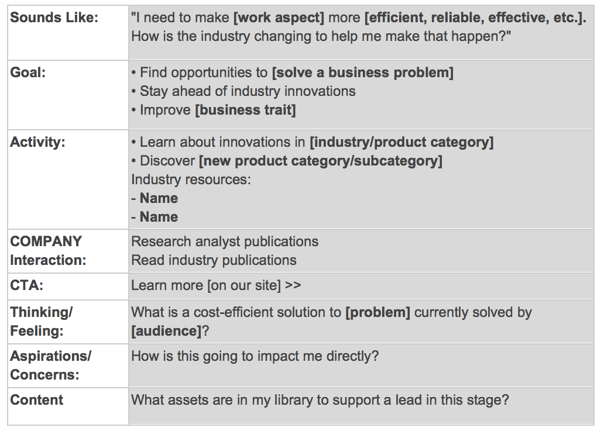How to Build a Powerful Marketing Strategy: Slow Down
Yes, you read that correctly. Slow Down!Time to market is critical especially when early data shows that you have a one-of-a-kind, must-buy product...
4 min read
![]() Rogue Marketing
Oct 18, 2018 2:45:33 AM
Rogue Marketing
Oct 18, 2018 2:45:33 AM
While every concept in this 1300-word post is worth the five or six minutes it will take to read it (and really should be read in its entirety), here’s the TL;DR version. Before creating your customer journey, you’ll want to consider these four major components:

Keep reading if you’re ready for more than just soundbites…
Creating Your Customer Journey
If you Google “customer journey”, “customer journey map” or “buyer journey”, you’ll find lots of information—it may even be how you landed here! How do you know which buyer journey is most right for your business? Put simply: it’s the customer journey a prospect finishes.While Rogue’s customer journey is linear (not all customer journey maps are), it is clear that prospects and leads can and will backtrack constantly. In most situations, leads don’t see ads and emails and immediately make a purchase—if they did, we’d have ads landing directly on credit-card-ready purchase forms. Knowing activity must transpire between awareness and purchase, Rogue considers that to be, at least to some degree, a linear process.Your customer journey, no matter its format, should deliver key psychological info into your customer’s purchase decision. Remember, customer journeys and their personas are built on insights, not assumptions. Conduct interviews, send surveys, read reviews, and get feedback in order to record the journey they are actually going through…not the journey you think they are going through.
“Get feedback to record the journey they are ACTUALLY going through… not the journey you THINK they are going through”
Customer Journey Format
Every organization will have slightly different buying phases. Depending on your audience mix, different personas may even have different stages… But when you use the Rogue Customer Journey template, you can count on recording a persona’s progress through key categories.Below, you can see a sample from a B2B customer journey.

As you track these categories across each stage, you see how your audiences come to purchase your product or service so that you can lead more down the funnel to purchase.
Use Their Language in Your Communication
The “sounds like” row of your customer journey map is where customers’ natural language informs the voice and tone of your messaging for each stage of the journey.
Your voice of the customer (VOC) research, recordings of conversations with leads that make progress, and research into online reviews will show you how customers are talking about their pains and concerns. You become their consultant when they hear themselves in your content. This section of the customer journey is at the top, because the way that the customer speaks will inform everything that comes below it.
Define the Next Step
No customer moves from one stage to the next of a customer journey until he or she has resolved the goal in their current phase. Many prospects will move backwards and forwards between stages, especially in the early stages of the customer journey.You can help customers move more quickly down the funnel when you know the goals of each stage. The more they feel that they are making progress toward solving their overarching problem, the more satisfied they will be with the resource that led them to the solution. Those goals then inform the calls to action you choose to provide at each stage. Not everyone is ready to “Get a Demo Now” or “Add to Cart.” But, depending on their stage, they may be ready to:
The order and process of each call to action will depend on your specific customer journey.While it may not be a customer’s goal to make a purchase, they do have the goal of solving a key problem. When you are the solution to all of the smaller problems that each solve a facet of the larger problem, then you become the obvious purchase for your audience.
Track the Funnel More Accurately
As you increase conversion rates, you can track who is moving and at what pace. You will be able to predict, for example, how many people you need at the top of the funnel, and at what pace 39% will move through; and how much faster or slower that is than the next 22%; and then how many fall off or take X months or longer to close.These measurements work beautifully in theory, but in practice they are incredibly difficult to achieve. You need a strong CRM strategy, with data analytics that cross between sales and marketing, in order to get an accurate read. But when you do, your efficiency has nowhere to go but up.
Audit Your Content
Congratulations! You now know what your audience wants to achieve.
It’s now more clear what they’re afraid of, and what they want out of the process.
You know how to give them the CTAs that they want to accomplish.So where does your content stand?Many content organizations create the content that they know how to create. No one can blame them, either—without conversion rate data, VOC interviews, and other inputs feeding them customer insights, how could they know beyond reasonable assumptions exactly what to create, for whom, and where to publish it?When you map content to your customer journey, however, you’re able to see gaps. You’re able to see where your most popular content fits, and where bottlenecks in your process may be tied to a lack of content that helps your audience fulfill that stage’s goal.
Resist the Urge to Get Overwhelmed
Even though this sounds right to you, getting from where you are to where you want to be can be a monumental task. After all, you’re probably not twiddling thumbs, wondering how to spend your time when you get into work each morning. Your plate is full, and heaped high. And your team is as busy as you are. How are you supposed to fit this into the mix? Ask yourself if downloading Rogue’s Customer Journey Template could be your key to creating a foundation that makes the rest of your work more efficient.
Of course, sometimes it’s easier said than done. And that’s where Rogue can help. The framework may be simple, but that doesn’t make it easy. Should achieving your marketing outcomes require an “easy(er) button,” this group of rogue marketers is always just a click away.
Yes, you read that correctly. Slow Down!Time to market is critical especially when early data shows that you have a one-of-a-kind, must-buy product...
%20(2).png)
On the way from awareness to purchase is the highly volatile — and often overlooked — consideration phase.
Sometimes you need to take the gloves off. To state the bold truth. And with any luck the truth will offend someone or at least create disagreement —...